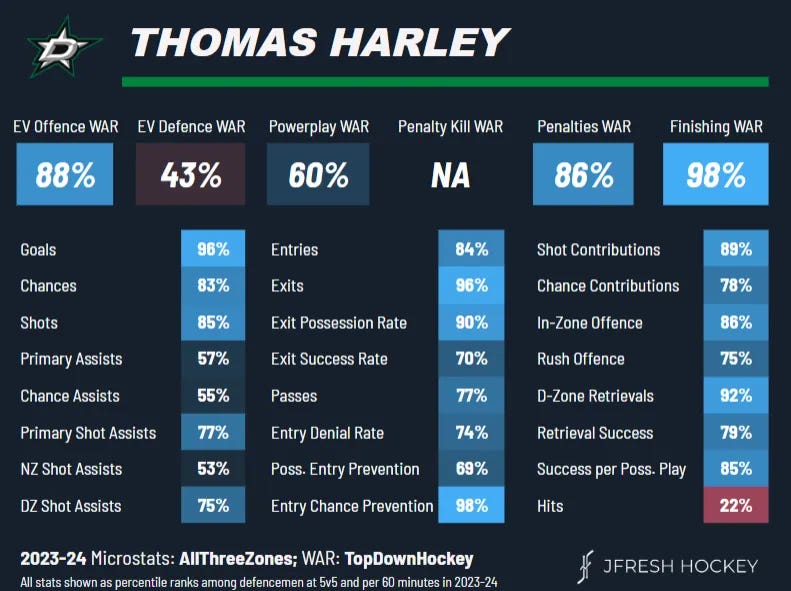Notes
Evergreen note: “Analytics” are not mere numbers. They’re models: ways of bridging practical (what happens on ice) and theoretical knowledge (what will or can happen based on ice based on prior events). They help define the conditions of performance over a period of time rather than glimpsing raw plus-minus. The climate versus the weather. These are not meant to be a right or wrong way to look at a hockey game; they’re meant to be useful in understanding the conditions of hockey itself.
The Stat: JFresh’s Hockey Cards.
The question each hockey card attempts to answer: What is a player worth in wins, and what are their ingredients?
How it answers that question: You see these all the time on Twitter. But you might be wondering where all of this data comes from. JFresh uses Patrick Bacon's WAR (or Wins Above Replacement) model. Like Evolving-Hockey, Bacon's model factors in a tight cauldron of essential stats. In this case, isolated impact of even strength offense, even strength defense, power play offense, penalty kill defense, impact on team penalty minute differential based on minutes taken or drawn, and shooting/goaltending impact.
Bacon's process interesting in that he has a clear definition of what constitutes a replacement level player which is anyone who signed a cap hit below $850,000 as UFAs. It turns out a replacement level player isn't totally worthless. In fact, this group tends to quite above average defensively. The point here to have a better sense of population within hockey rather than a raw average.
You might be wondering "okay but how do you even define what a win is worth?" Good question. Over a three-year sample, the answer is 5.33 goals. That's the broth for which this stat is created, and it’s ultimately displayed in percentile form. Within that, Bacon's expected goal model (which he prefers to call a Shot Quality model; something I firmly agree with) uses expected goals to assess offense. The factors that go into his model are typical-ish of what most models account for, with a few added wrinkles, like whether the shooter was taking a shot from their off-wing, and scorekeeper bias. The end result is the card you see on Twitter all the time.
Bacon himself has done a lot to explain his expected goal model, why it’s different, and why it’s more effective, so I recommend reading his work if you want to fall down the statistical rabbit hole.
Further reading:

Dive into your interests
We'll recommend top publications based on the topics you select.

